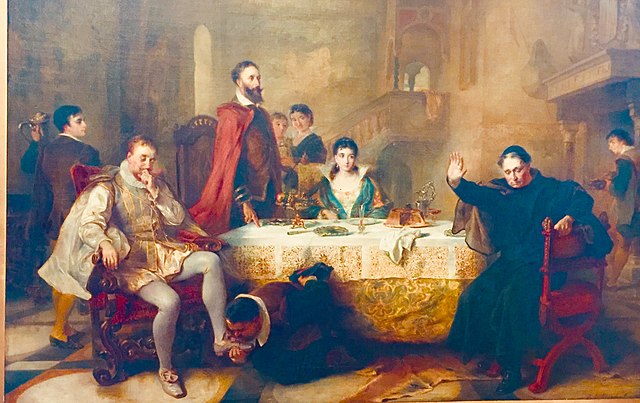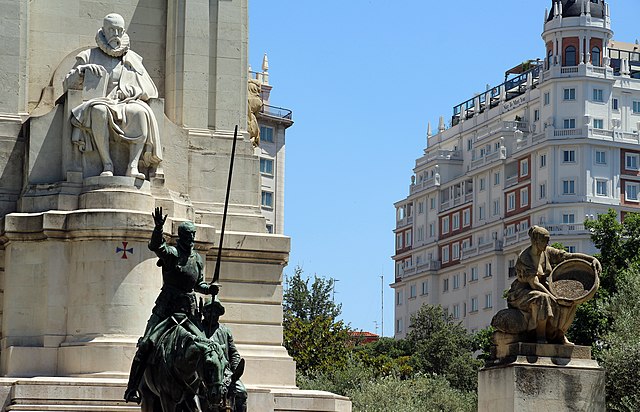Instituto Cervantes is a worldwide nonprofit organization created by the Spanish government in 1991. It is named after Miguel de Cervantes (1547–1616), the author of Don Quixote and perhaps the most important figure in the history of Spanish literature. The Cervantes Institute is the largest organization in the world responsible for promoting the study and the teaching of Spanish language and culture.
Cervantes Institute headquarters, in Madrid
New York
New Delhi
Paris
Miguel de Cervantes Saavedra was an Early Modern Spanish writer widely regarded as the greatest writer in the Spanish language and one of the world's pre-eminent novelists. He is best known for his novel Don Quixote, a work often cited as both the first modern novel and "the first great novel of world literature". A 2002 poll of 100 well-known authors voted it the "best book of all time", as voted by the judges from among the "best and most central works in world literature".
This portrait, attributed to Juan de Jáuregui, is unauthenticated. No authenticated image of Cervantes exists.
An incident in the story of Don Quixote (1870), by Robert Hillingford.
Monument of Cervantes erected in 1929 (Madrid)
Statue of Miguel de Cervantes at the harbour of Naupactus (Lepanto)








